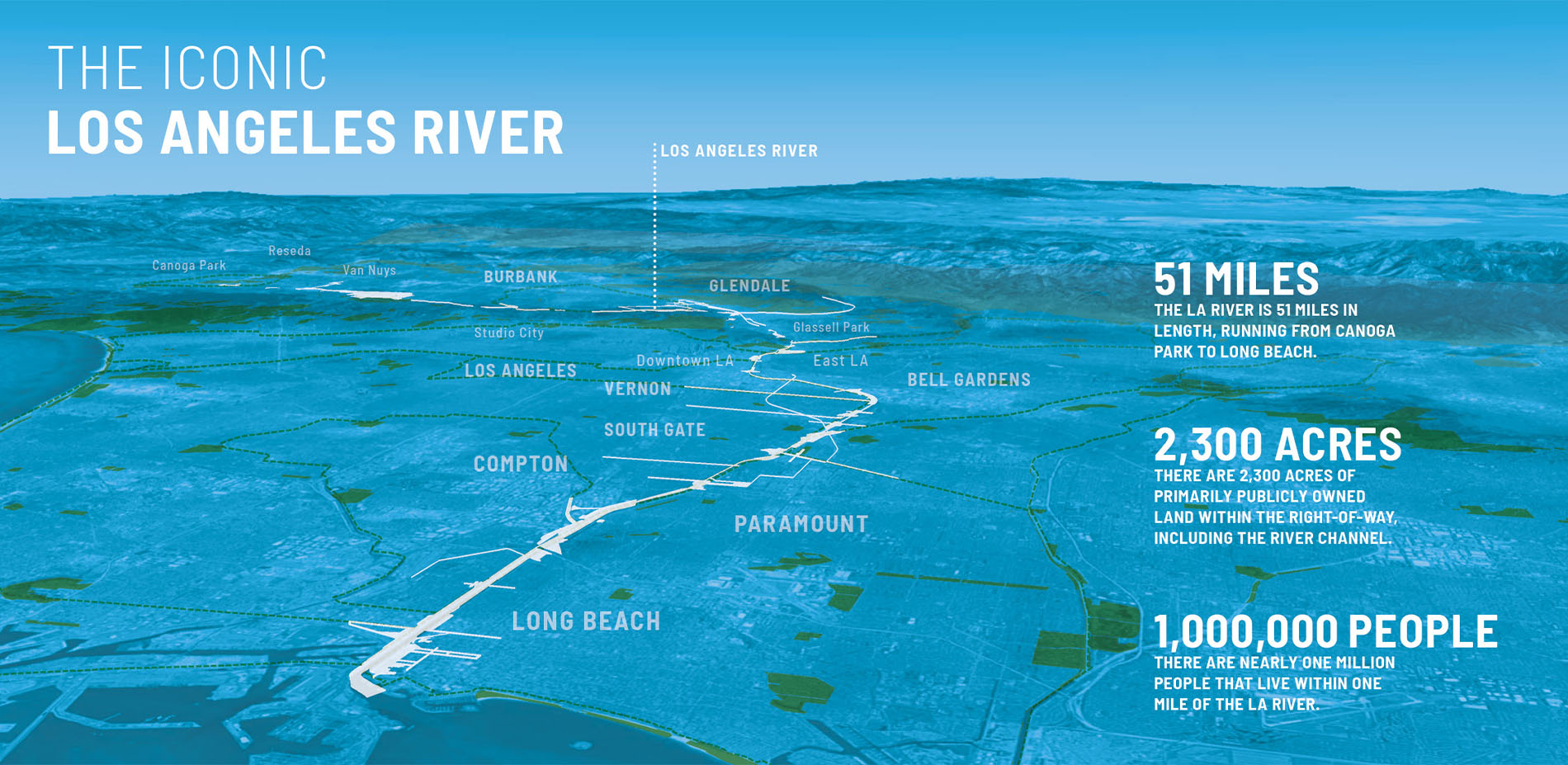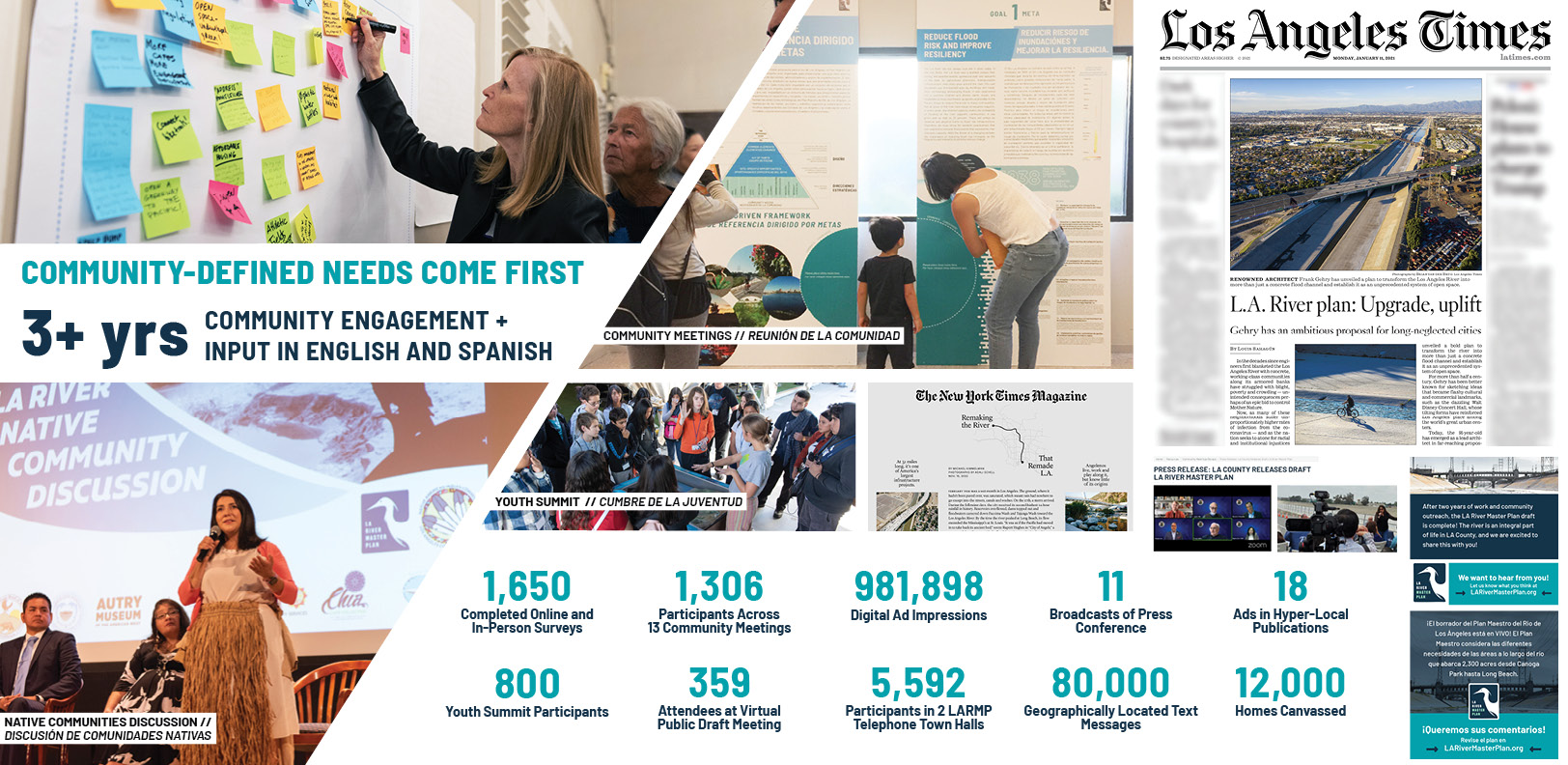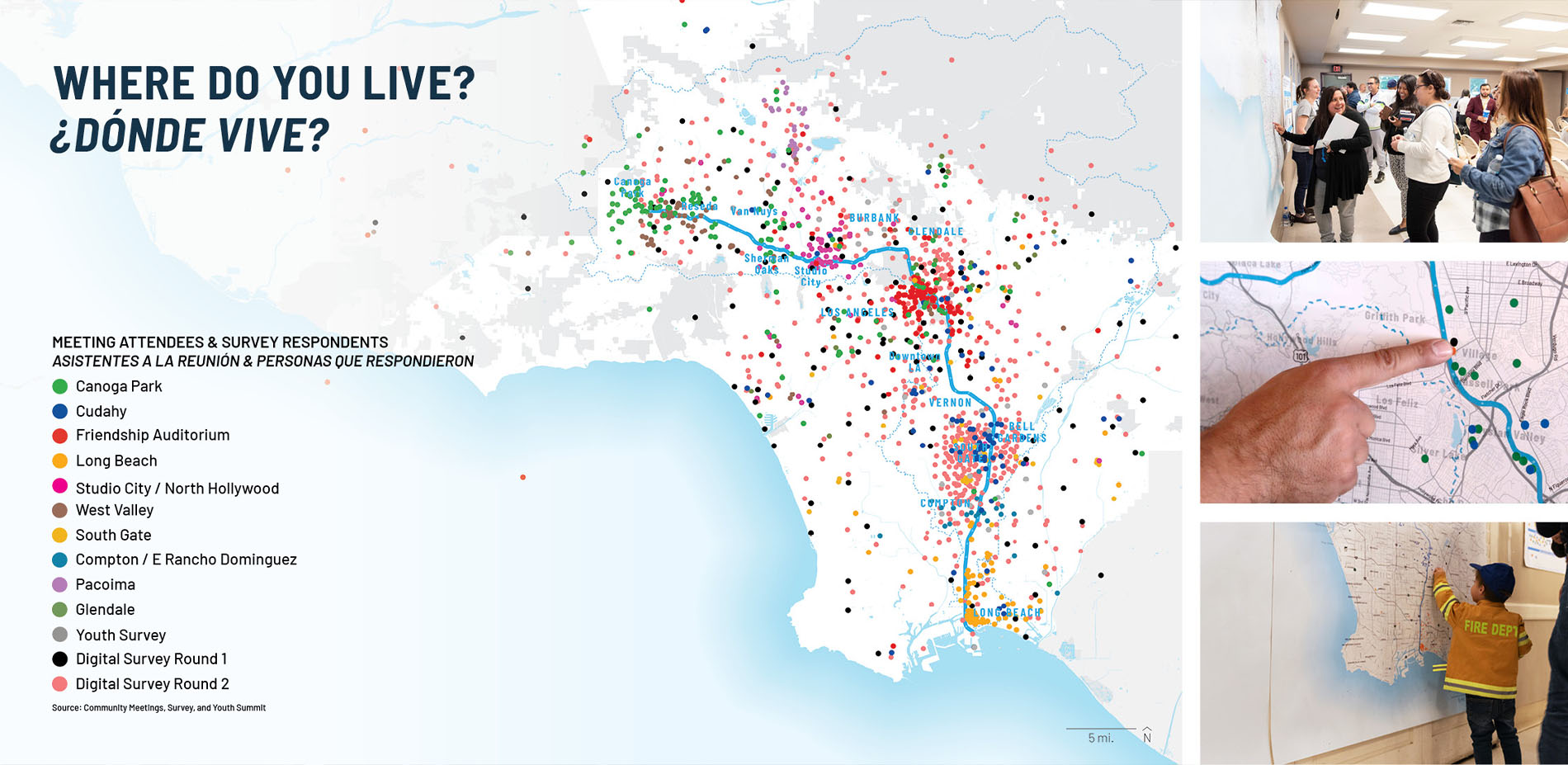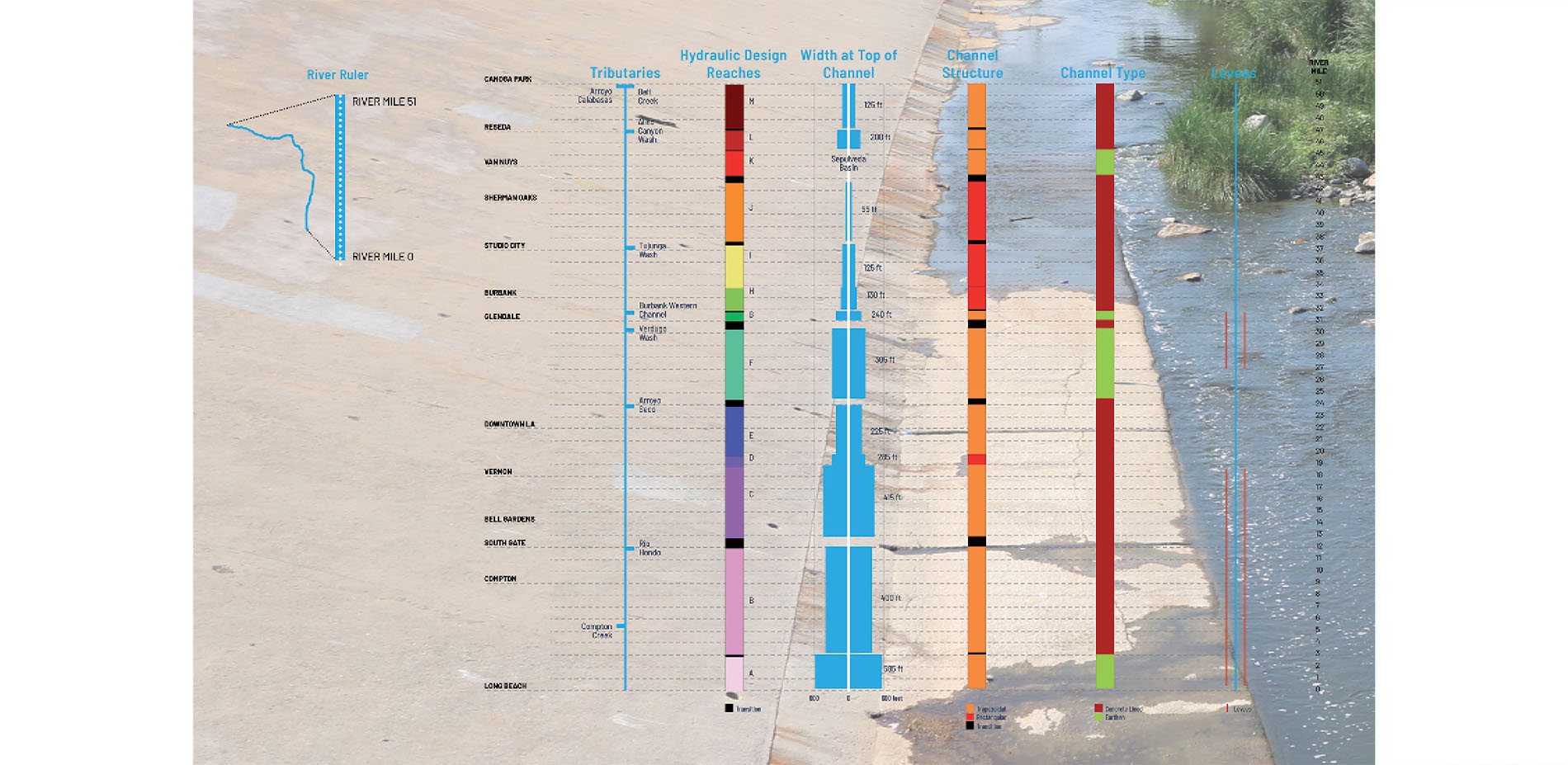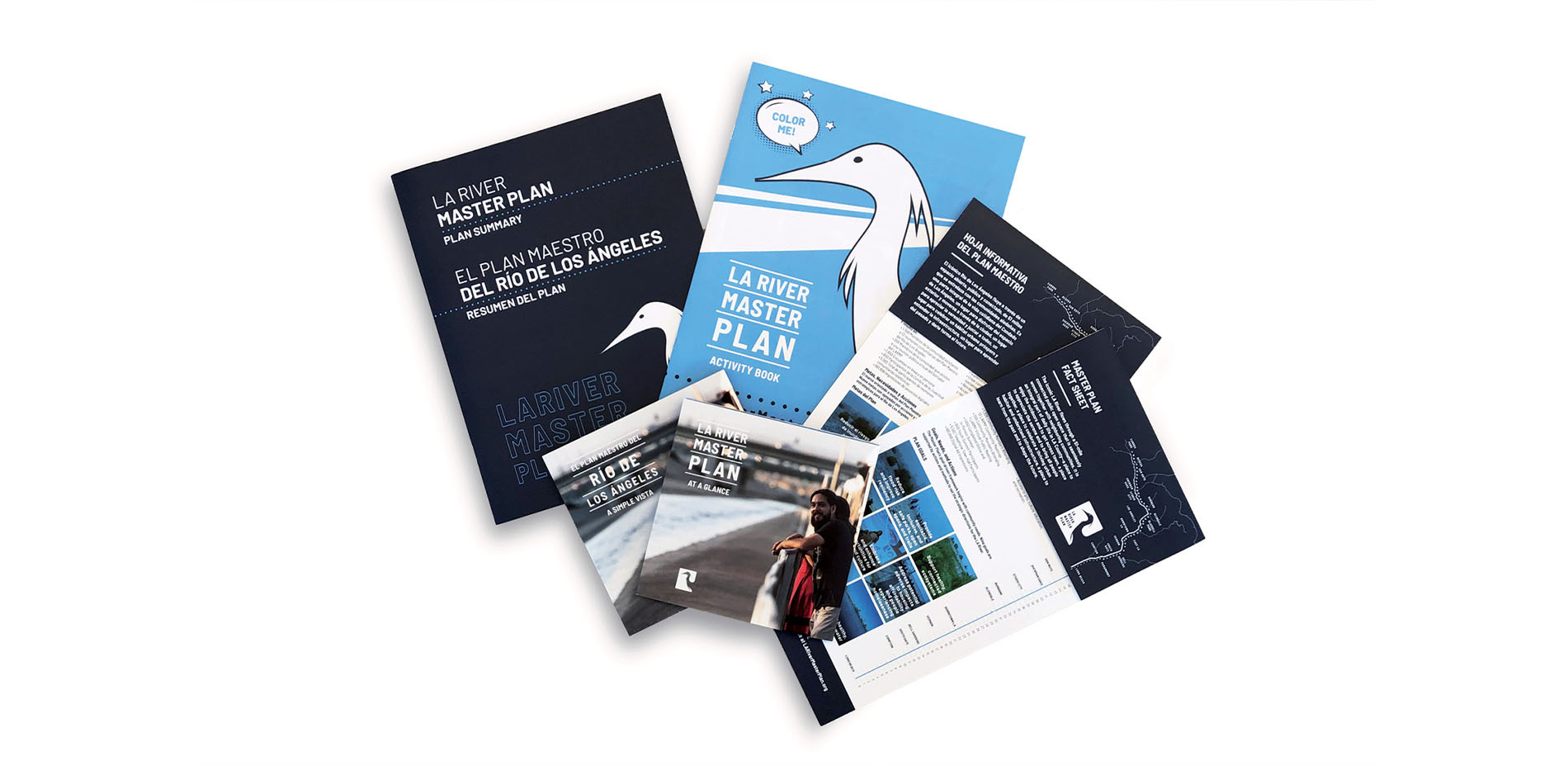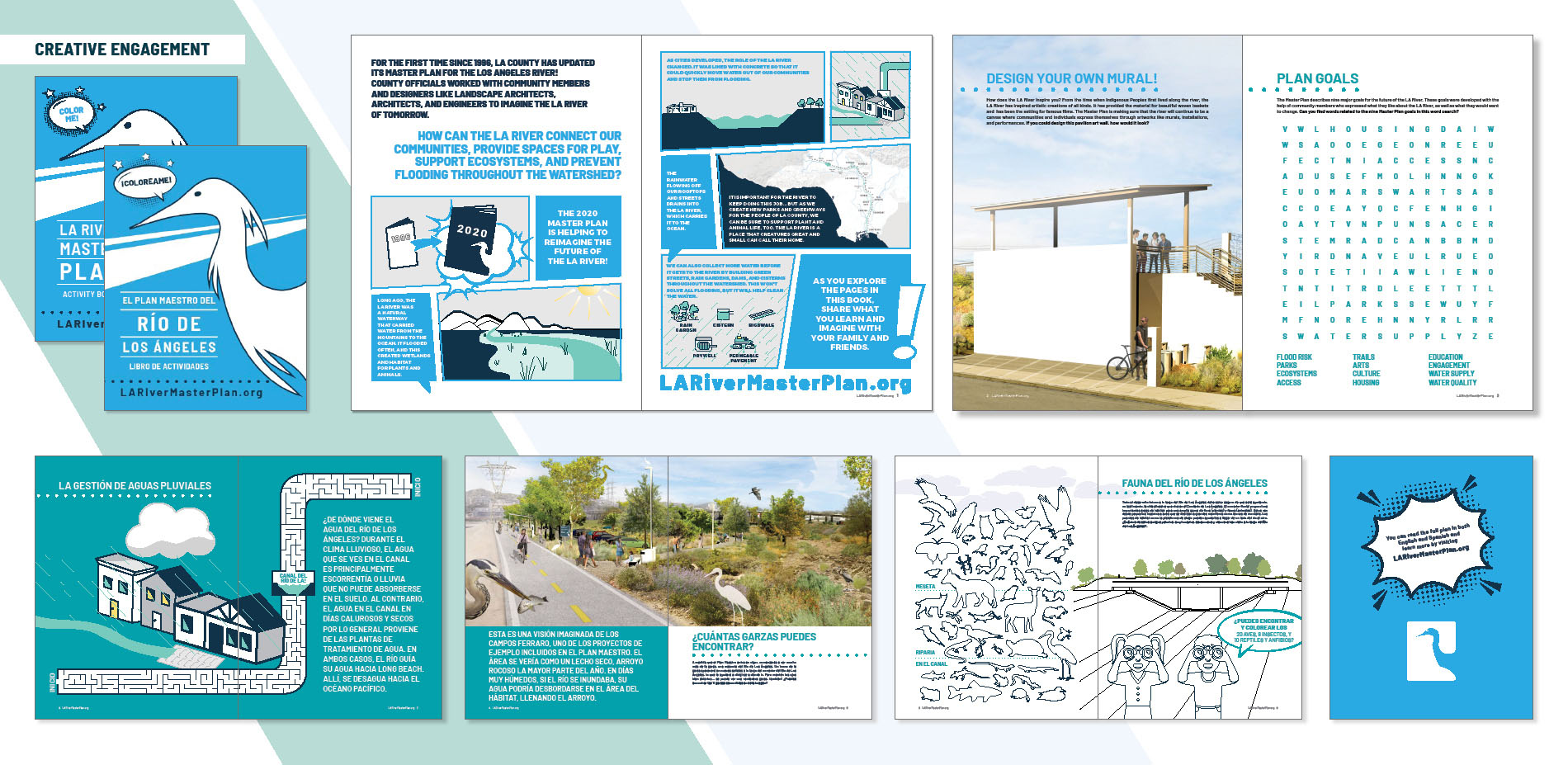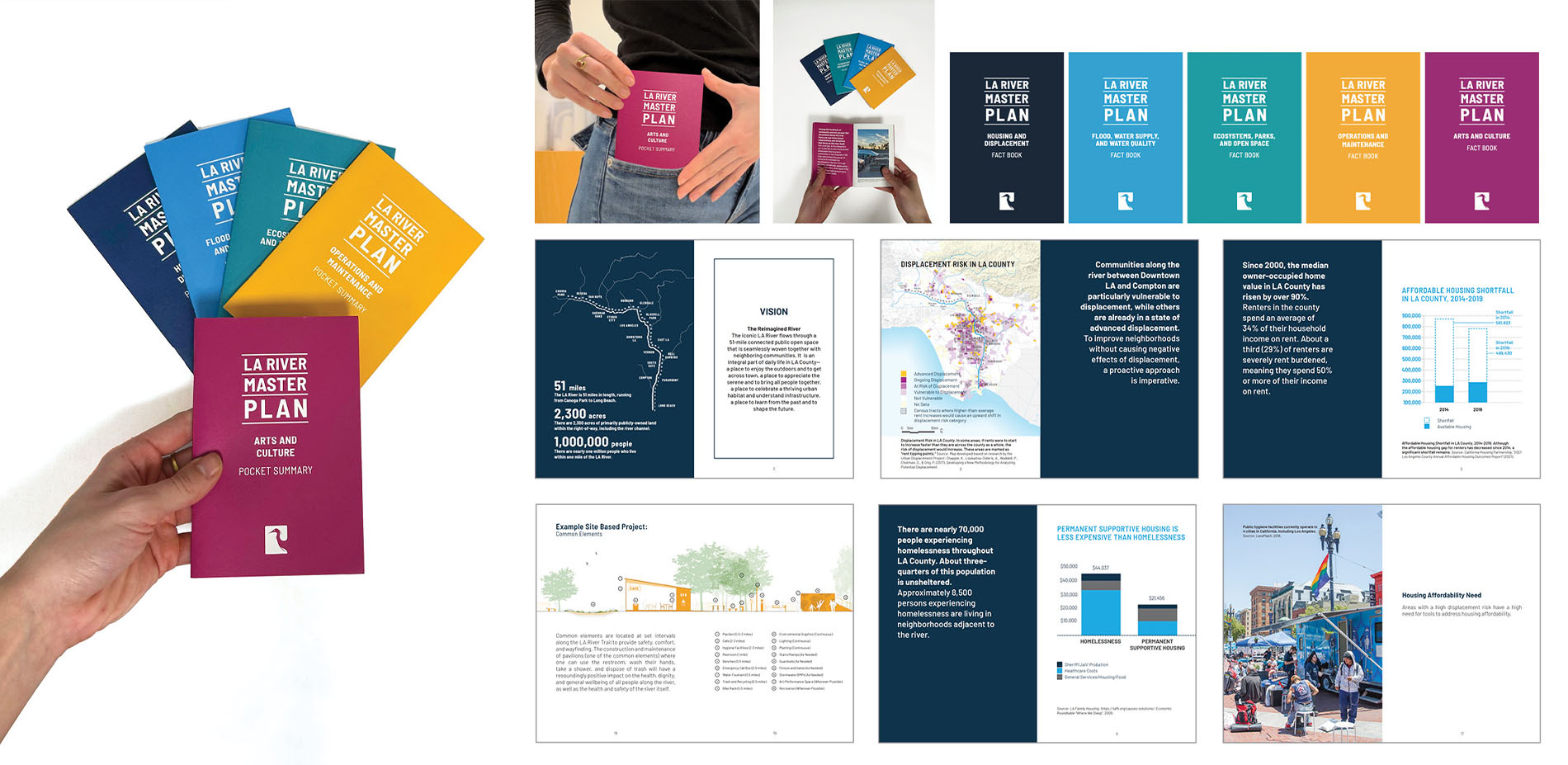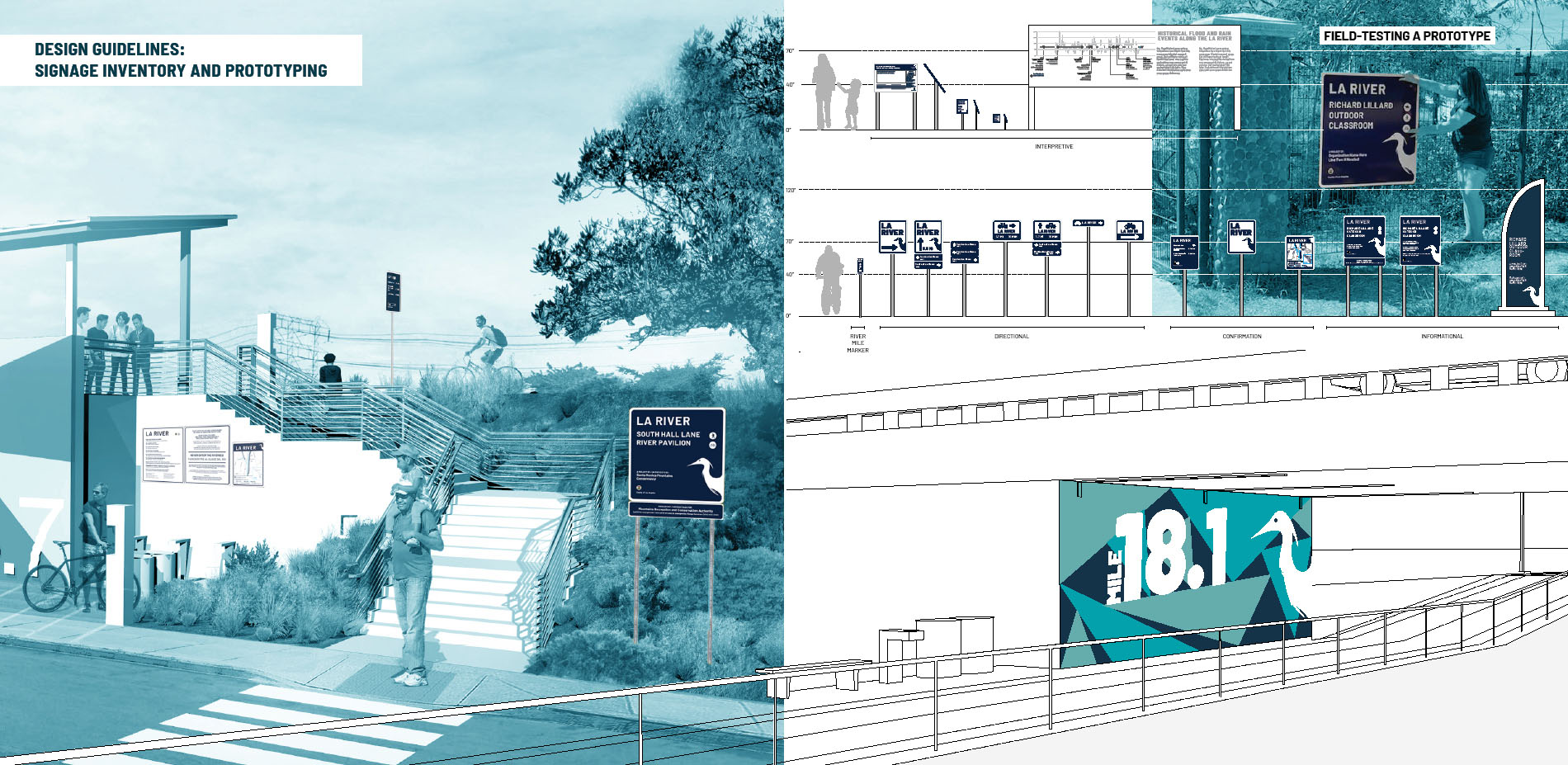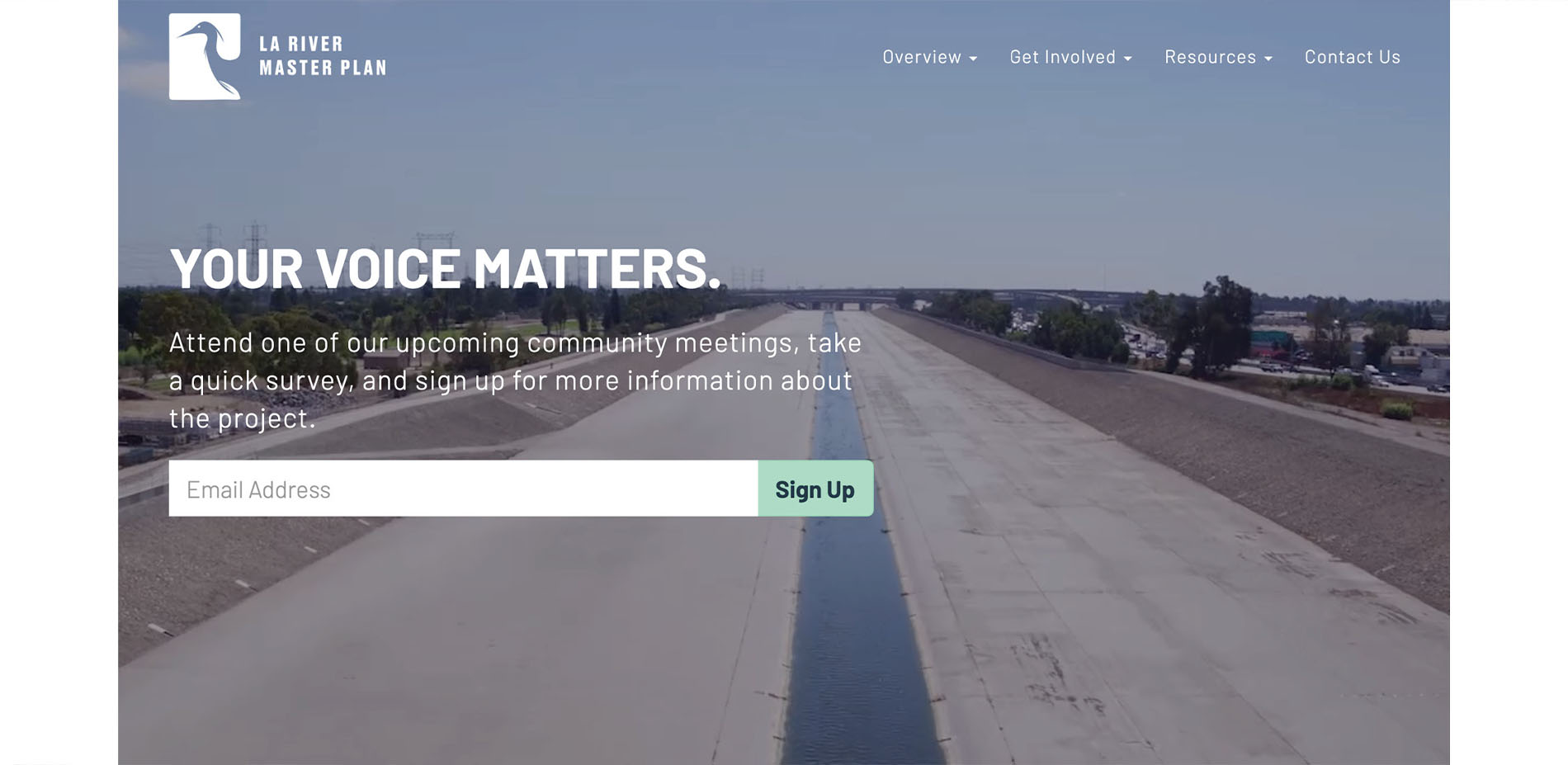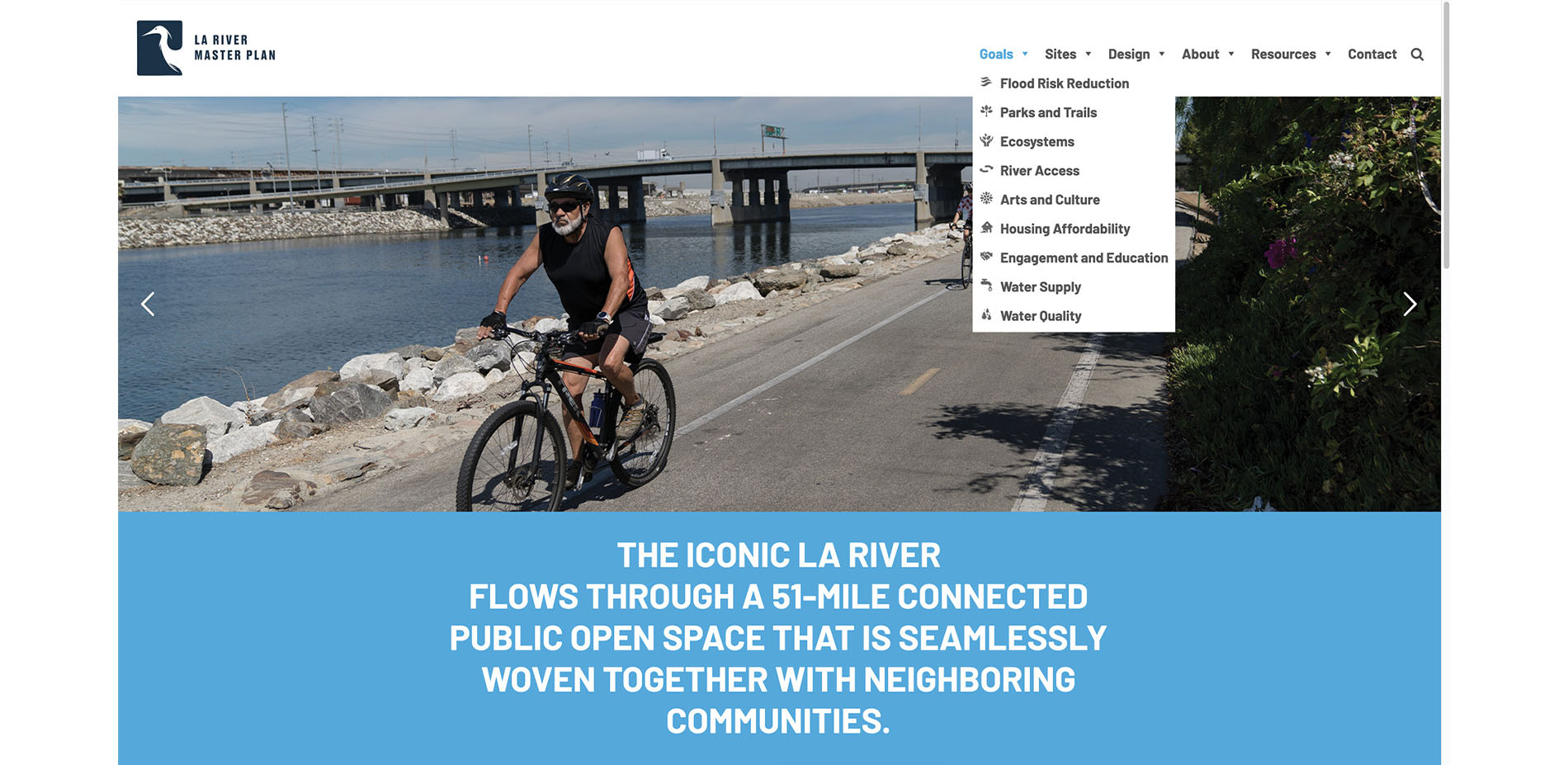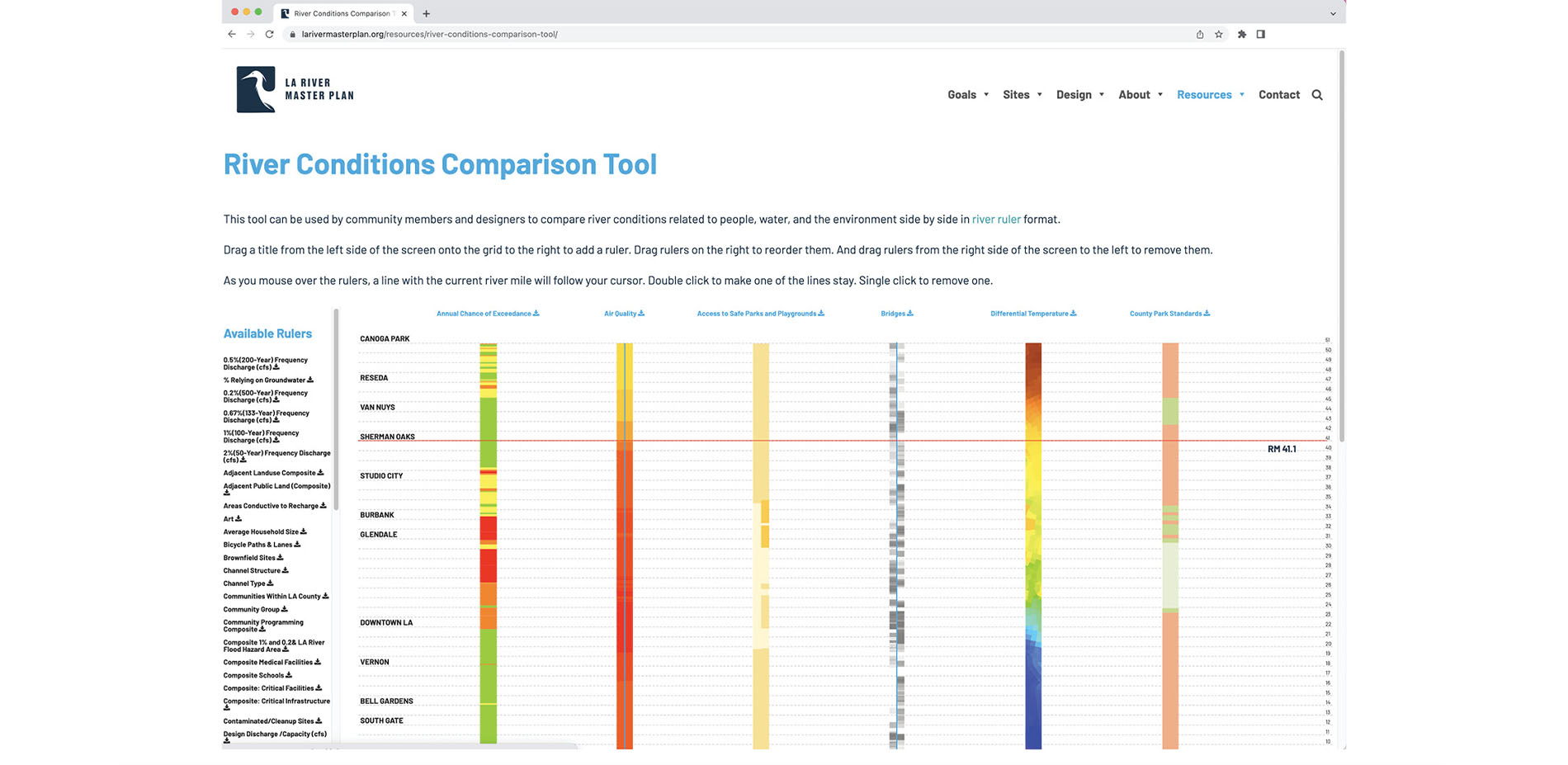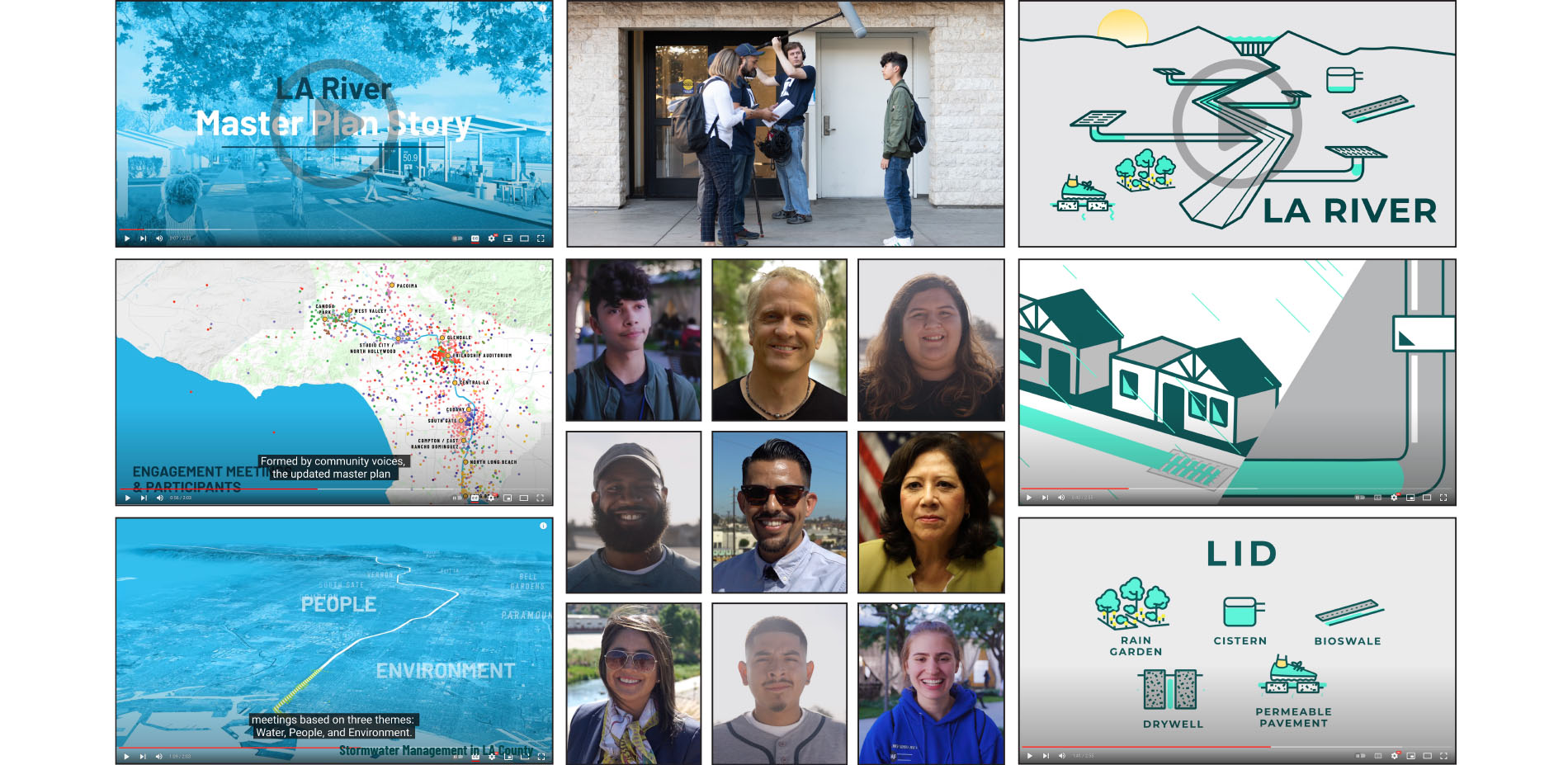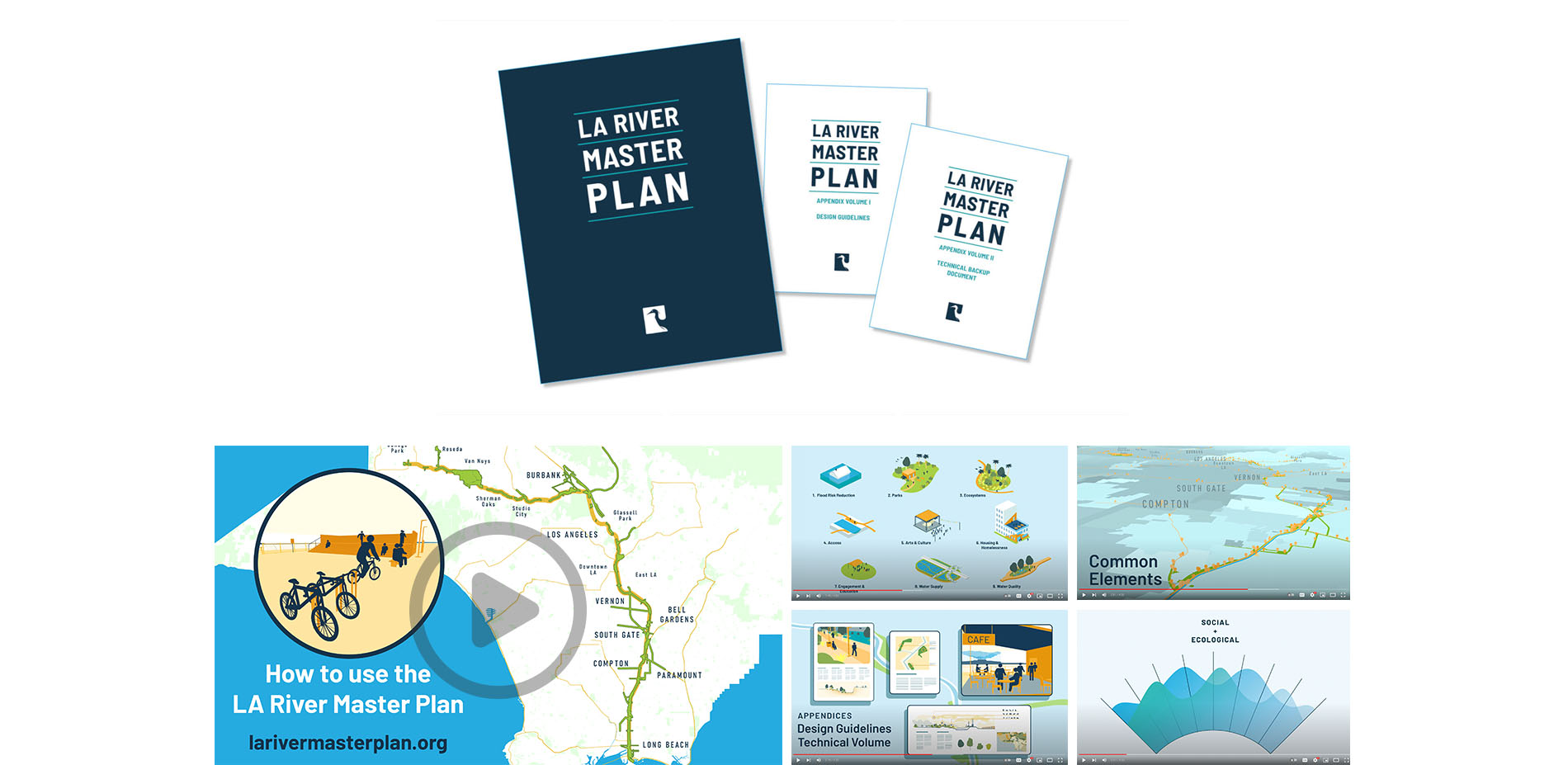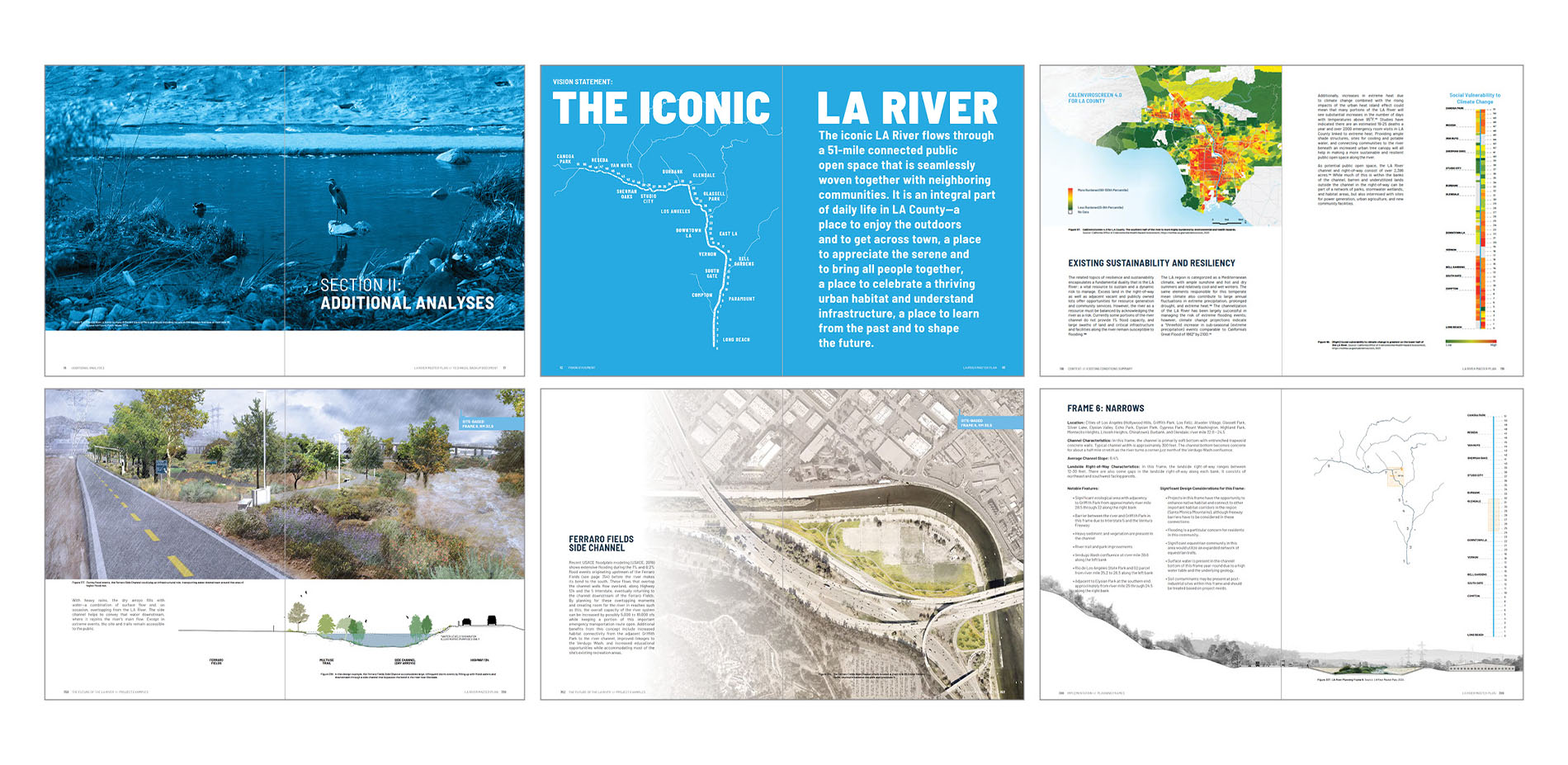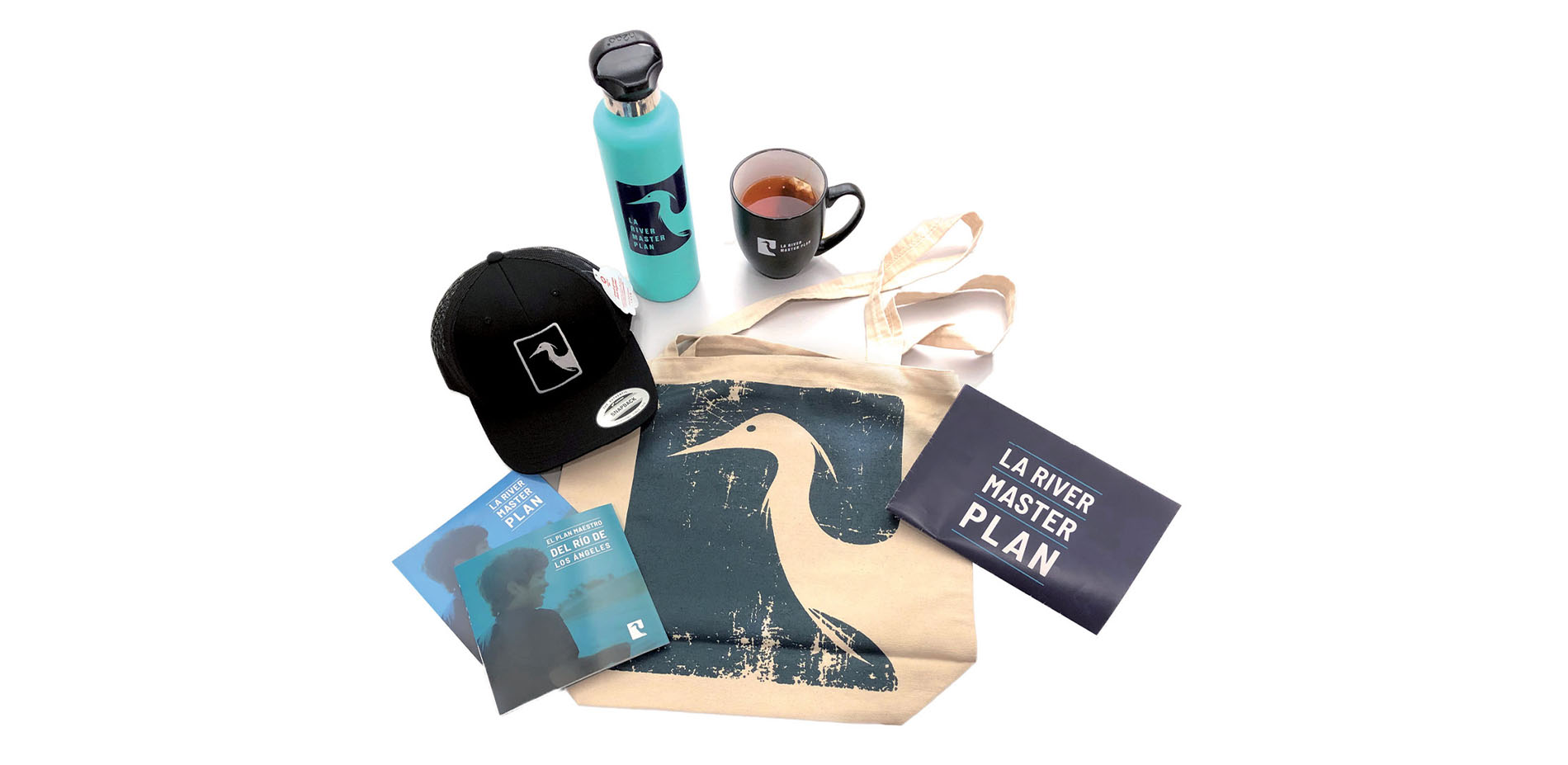Los Angeles River Master Plan Update
Honor Award
Communications
Los Angeles, California, United States
Client: Los Angeles County Public Works
Effective and compelling, stimulating interest and representing information through great visualization materials, both analytical and identity based. Multi-layered strategies were creative and fun while clearly and succinctly communicating analysis in engaging and interesting ways. The focus on tailored techniques for multiple audiences (age groups, cultures, ethnicities, and interests) captures the imagination to spark interest and broaden the range of impact.
- 2023 Awards Jury
Project Credits
Richard Roark, RLA, 911±¨¡œÕ¯, Lead Designer, Landscape Architecture, Urban Design, Engagement, and Planning
Jessica Henson, RLA, 911±¨¡œÕ¯, Project Manager, Landscape Architecture, Urban Design, Engagement, and Planning
Laurie Olin, F911±¨¡œÕ¯, Founder
Andrew Dobshinsky, Planning Associate
Clare Casstevens, Senior Landscape Architect
JoAnna Karaman, 911±¨¡œÕ¯, Senior Landscape Architect
Nate Wooten, 911±¨¡œÕ¯, Associate
Sarah Swanseen, 911±¨¡œÕ¯, Landscape Architect
AJ Sus, Landscape Architect
Geosyntec, Prime Engineer and Water Resources
Gehry Partners, Architecture and Planning
River LA, Engagement
Street Level Advisors, Affordable Housing Consultant
Kearns & West, Facilitation
72 and Sunny, Branding
Kris Helm Consulting, Water Resources Consulting
Landau Design, Digital Content and Animation
Project Statement
Nearly one million people live within one mile of the LA River. Famous for its concrete-lined channel and maligned as single-purpose infrastructure dividing communities, the river is reimagined in the LA River Master Plan Update as an integral part of daily life that addresses the interconnected needs of people, water, and the environment. Communicating and enacting this shift required innovative, multilingual, multi-generational, and hyper-local outreach to long-overlooked communities along the river.
Project Narrative
One million people live within one mile of the LA River. While fragmented jurisdictions, land ownership, and funding constraints have presented hurdles to rethinking the LA River for decades, the 2022 LA River Master Plan outlines new strategies that support the transformation of the river from a single-use corridor to a multi-benefit resource for LA County communities. In 2021, a poll found that fewer than 50% of County residents had ever visited the river. Since then, increased usage and familiarity of the river corridor reflect positive shifts in the education and engagement of local communities reflected in the plan’s multilingual, hyper-local, and innovative communications strategy. During the engagement process, nearly one million people engaged in person or online.
The plan’s engagement process employed a variety of media and activities to ensure that resident concerns and aspirations across geographic, language, and accessibility spectra were recognized and reflected in the plan. For example, the plan includes nine goals addressing flood risk, equitable open space access, healthy ecosystems, arts and cultural opportunities, housing affordability, education, and water quality and reliability. These evolved out of community priorities and deep research of the river and LA County’s physical, social, and cultural attributes. Hundreds of datasets informed the plan, and several datasets were created during the planning process, including a wealth of new data generated from LA County residents through the engagement process.
Community meetings, surveys, and innovative digital communications were cornerstone engagement methods that sequentially introduced conditions along the river, documented resident concerns, used feedback to prioritize goals, and provided immersive walk-throughs of master plan components. A Youth Summit engaged 700 high school students, and telephone town halls reached more than 5,000 individuals unable to attend in-person meetings and lacking digital access. Additional events hosted by regional and local community partners included popup sidewalk and park activations, educational activities, and data gathering. A multicultural-focused media service hosted a rollout press event that was translated into three languages in addition to English. As the plan timeline covered the COVID-19 pandemic, the team worked to ensure consistent communications and community engagement even during the pandemic’s toughest days.
Throughout the planning process and in the plan’s final delivery, creative graphic tools and representations helped make complex information accessible to a general audience. Print and digital ad campaigns, videos, and an engagement website were among the many media developed for this purpose. For example, a film series called “River Stories,” capturing interviews about peoples’ personal connections to the river, was screened at engagement events. Another video series used animation to inform viewers about watershed management and flood safety. An activity book for children engaged the county’s youngest residents.
The final plan, adopted in June 2022, is now publicly accessible through an interactive website at www.larivermasterplan.org. The website includes PDF downloads of the master plan’s three volumes—a main document and two technical appendices—as well as interactive content and research tools that will continue to serve LA County’s ten million residents through the plan’s implementation.
